#These retro speakers offer modern acoustics
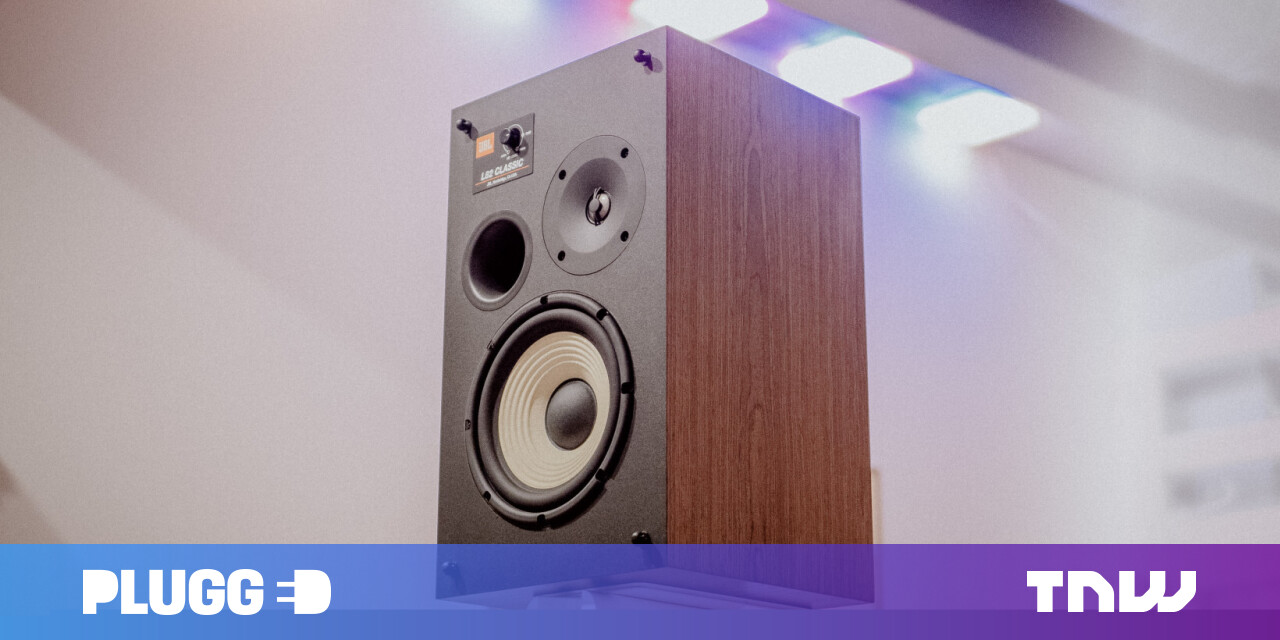
Table of Contents
“#These retro speakers offer modern acoustics”
With the smaller (but not certainly not small) L82 Classic, JBL has outdone itself again, at least in the reviewer’s eyes. At $2,500, it is one of the most enjoyable speakers to grace my apartment — one that looks good, sounds great, and has the measured performance to back it up.
Design
The retro look — a boxy wooden design with a massive woofer — is likely to be divisive, but I love how different it looks from almost anything else on the market. It’s a statement piece, and it fits the Brooklyn hipster-ish vibe of my apartment well, though I do wish the speaker came in lighter tones; I think a finish in white with lighter wood wrap could better fit many kinds of modern decor.
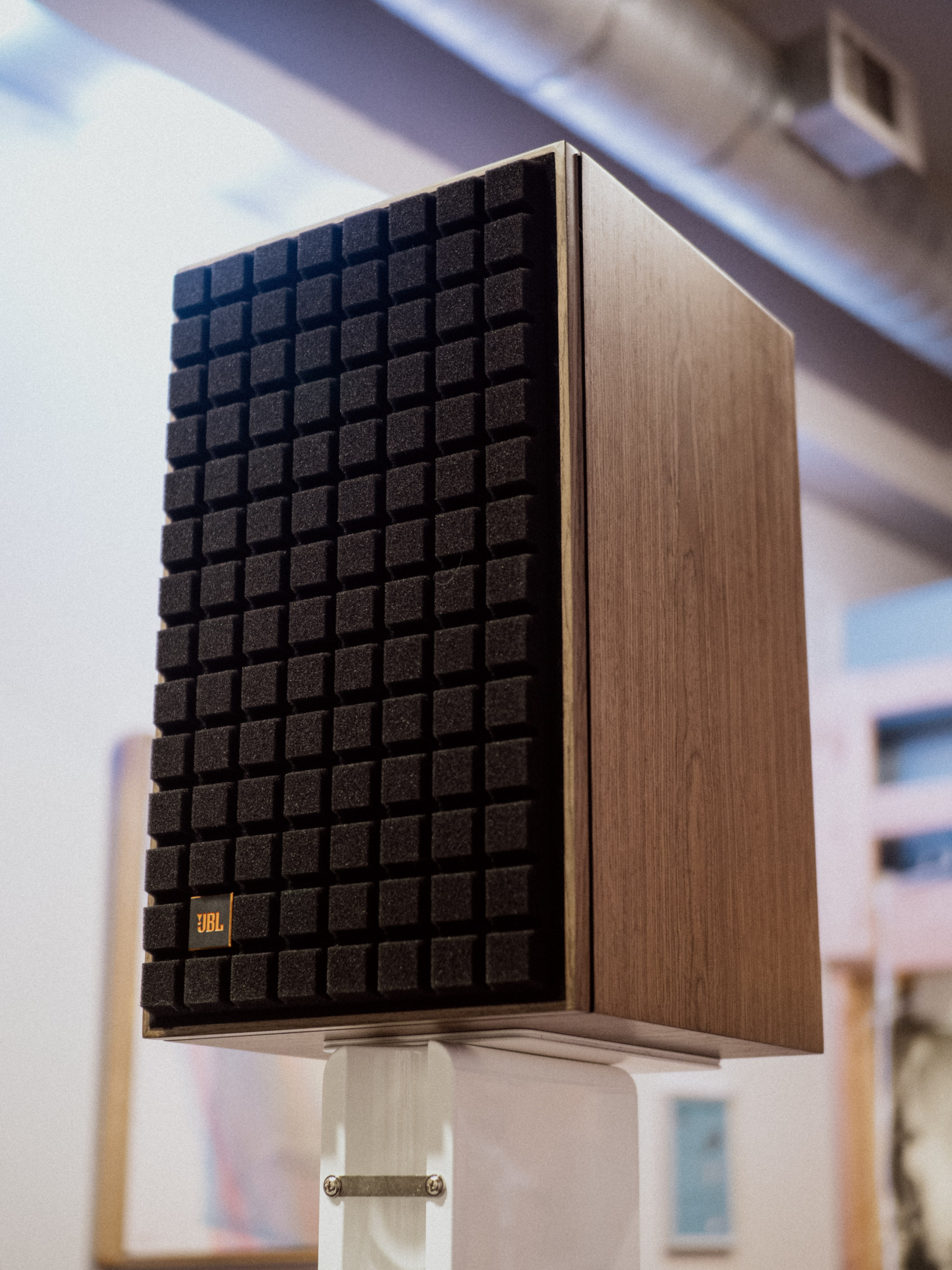
As with the L100 Classic, the L82 can be ordered with the line’s iconic waffle-iron-looking grille in black, blue, or orange. I would’ve opted for the blue, personally, but the black unit I reviewed is a neutral option that should work in many people’s homes. I just wish the grilles used magnets instead of annoying friction-based pegs. Not everything needs to be retro.
JBL does make custom stands for the L82 at $250 a pair, which sit a little lower and angle the unit up slightly. But unlike the L100 Classic, for which I thought the custom stands were necessary, the L82 can just about fit on a typical bookshelf speaker stand without looking ridiculous.
In any case, you’ll want to set them on a sturdy surface, as the L82 comes in at a hefty 28 lb per speaker, what with its large, boxy design and 8-inch woofers. Unlike the L100 Classic, the L82 is a 2-way design with just a woofer and a tweeter. This can often create problems for integration due to the large difference in size between the units, but as we’ll see later, the tweeter’s waveguide and ability to extend lower than usual, ensure a smooth transition between the lows and highs.
The Setup
Before we get to the sound, it’s worth noting that the L82 has a customizable sound profile — something rare to find in a passive pair of speakers (as in, one that requires external amplifiers and doesn’t feature digital signal processing).
This is thanks to a high-frequency knob which gives you fine control over the speaker’s upper frequency response. The knob covers a wide portion of the frequency range, and therefore can effectively change the speaker’s sound rather dramatically. Too bright? Turn the knob down. Too dark? Turn it up!
I wish more speakers would include physical controls like this. Though you can always EQ the sound manually through an AVR or other device, sometimes just a slight change in the tilt of the frequency response is the difference between a speaker sounding ‘good’ and ‘great’ in your home.
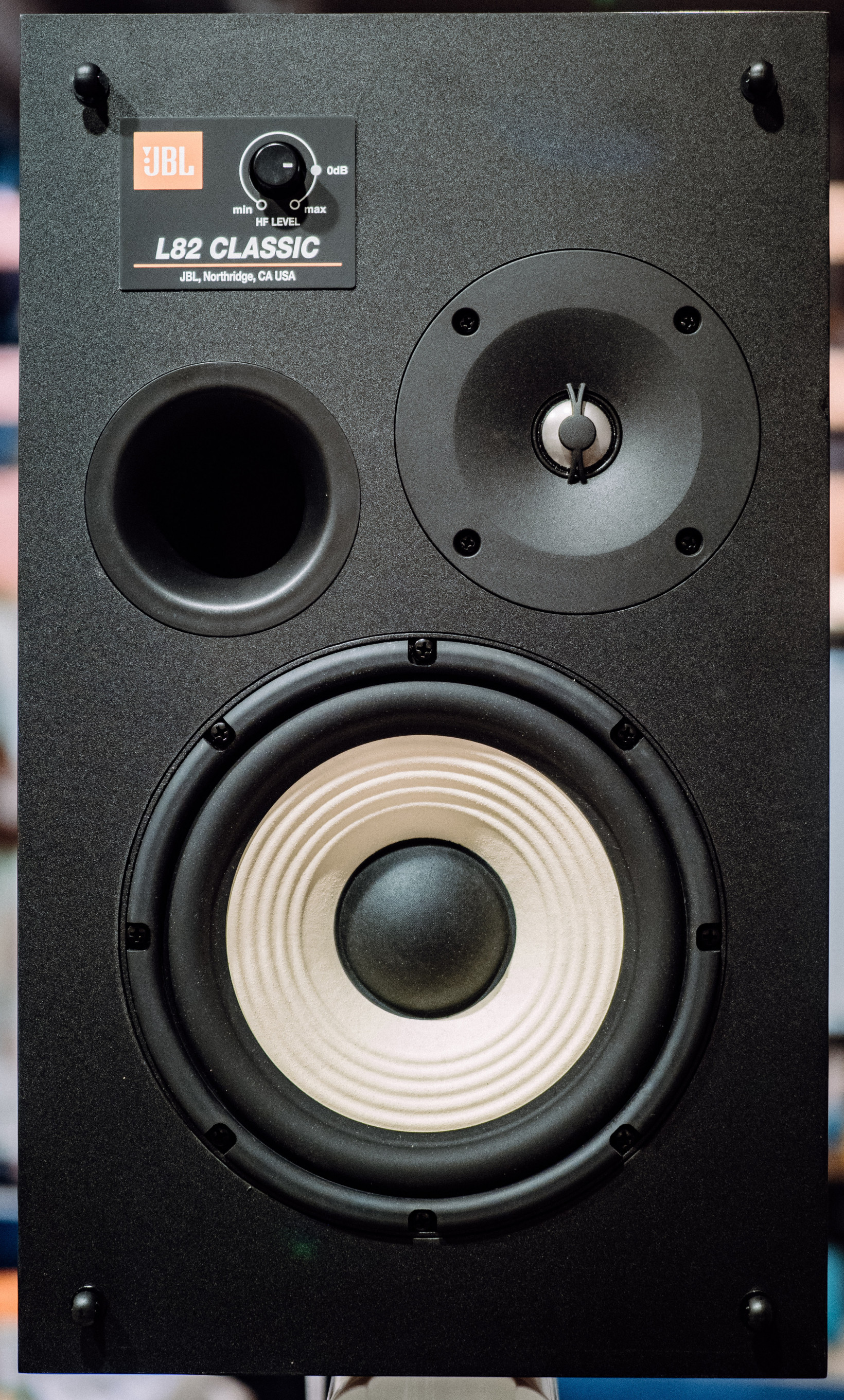
Another way the L82 let you tweak sound is in how you position the speakers. Unlike the L100 Classic, which had an asymmetrical layout in which the tweeter was always on the same side of the body, the L82’s tweeters are mirrored.
This means you can adjust the soundstage of the speaker to a notable degree depending on which speaker you choose as your left and right units. You can have the tweeters on the inside edge for a slightly more focused, slightly more compressed soundstage, or on the outside edges for a slightly more expansive but diffuse soundstage.
JBL doesn’t provide a specific recommendation in the L82’s manual, but Chris Hagen, the L82’s designer, told me:
“In setups where the speakers are widely spaced compared to listening distance, the speakers should be placed so that the tweeters would be inboard, or closer to each other. This would also be the case if both speakers are inside of, but next to, reflecting surfaces (such as the walls, or large pieces of furniture).
If the speakers are placed closer together than the listening distance and there are no reflecting surfaces just outboard of them, then it is recommended to place the speakers so that the tweeters are outboard, or furthest away from each other.”
I preferred the outboard position. Though the speaker sounded good with both setups, the difference in spatial presentation was quite obvious in my home, with the outboard position yielding a more expansive soundstage, even if I tried moving the speaker to compensate for the difference in tweeter position. Your mileage may vary.
The Sound
I have to admit, I was a little nervous going into this review. The L100 Classic is one of my all-time favorites, and I didn’t know if the L82 would be able to recapture that feeling. After all, I’ve listened to some amazing speakers since then.
My worries were misguided. The L82 are wonderful.
Like the L100, there were three things that stood out to me in particular: First, a fantastic, expansive soundstage. Second, an overarching sense of neutrality despite the retro looks. And three, a toe-tapping sense of dynamics one rarely finds in bookshelf speakers.
Although impressions of soundstage will vary from room to room, the L82 managed to throw an image that seemed to extend well beyond the edges of the speakers — both horizontally and vertically. The sense of scale is impressive; on albums for operas and musicals like the excellent Hadestown, the L82 make it easy to imagine singers occupying a physical stage in front of you rather than being replicated from a pair of boxes.
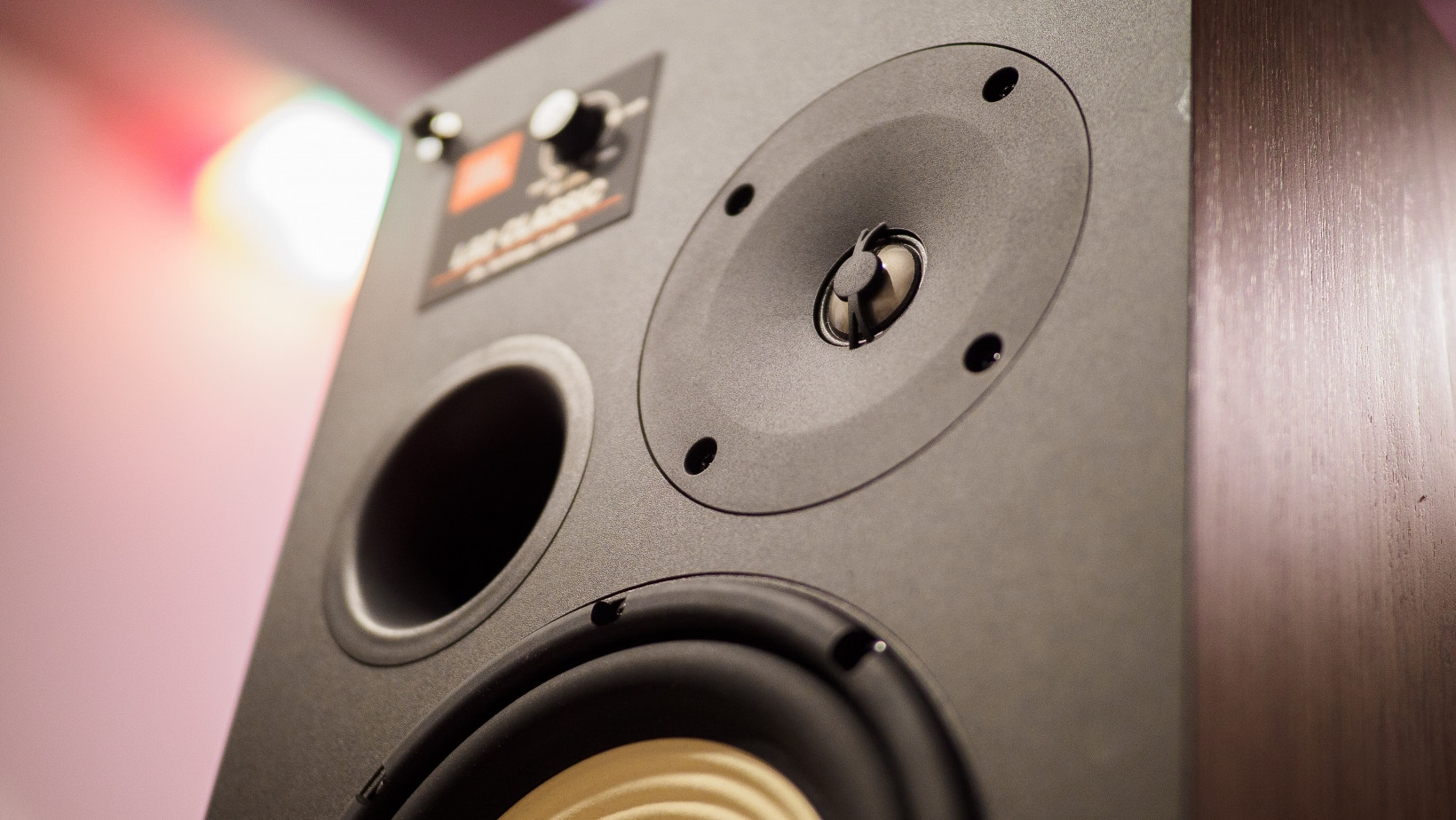
The L82 shares a tweeter and a shallow waveguide with the L100 Classic that is designed to throw out a wide soundstage rather than the deep waveguides or horns that tend to narrow the soundstage on some modern speakers. The Buchardt A500, for example, has a slightly more focused soundstage than the L82 as positioned, but I preferred the L82’s sheer sense of scale in direct comparisons.
In terms of tonality, it’s easy to assume the L82 would have a ‘retro’ sound due to the looks — one might anticipate exaggerated bass, sizzling highs, or other obvious coloration to give it some kind of special charm. But no — these are speakers neutral enough I’d be happy to use them as studio monitors.
That’s not to say they are completely devoid of character. The speakers did have just a bit of a midbass emphasis that give kick drums some extra oomph — a ‘flaw’ I do not mind. Though bass quantity can vary depending on your home and placement, the L82 reach low enough that most users probably don’t need a subwoofer (although I always recommend one).
This is especially true if you mostly listen to acoustic music, but even on Beyonce’s ‘Partition,’ a track that starts with a frequency sweep that sounds like a subwoofer test, the L82 manages to present all but the deepest sub-bass. You should get useful energy into the 30 Hz region in-room.
On the treble front, the default ‘0’ knob setting may have just a tad more ‘sparkle’ than neutral if you aim the speakers right at your listening position, but as I preferred them with just a little bit of toe-in, I found the default balance largely appropriate.
In any case, these are relatively subtle traits that can be tweaked by knobs and positioning; the prevailing impression is one of transparency. Vocals shine in particular, to my recollection having a more neutral tonality out of the box than perhaps any speaker I’ve heard since the Dutch & Dutch 8C.
Lastly, ‘there’s no replacement for displacement,’ as the saying goes; in this case, that means the 8-inch woofer offers relatively effortless dynamics compared to the typical 5 and 6-inch woofers in your average bookshelf speaker. Though I tend to listen at don’t-annoy-my-neighbors volumes, I got the distinct impression the L82 was able to hit dynamic peaks more cleanly than most speakers meant to be mounted on a stand. When I did risk an annoyed knock on my door, the L82 managed to get as loud as my ears could handle without any audible distortion.
The measurements
I almost always outline my listening notes before taking measurements, as I try not to let the data color my subjective thoughts too much. I also like to think I can puzzle out most of the qualities of a speaker through listening alone.
Sometimes I’m a bit off from the mark, but this doesn’t seem to be one of them. I noted the L82’s prevailing characteristics are neutrality with an expansive, accurate soundstage, and this is evident in the measurements.
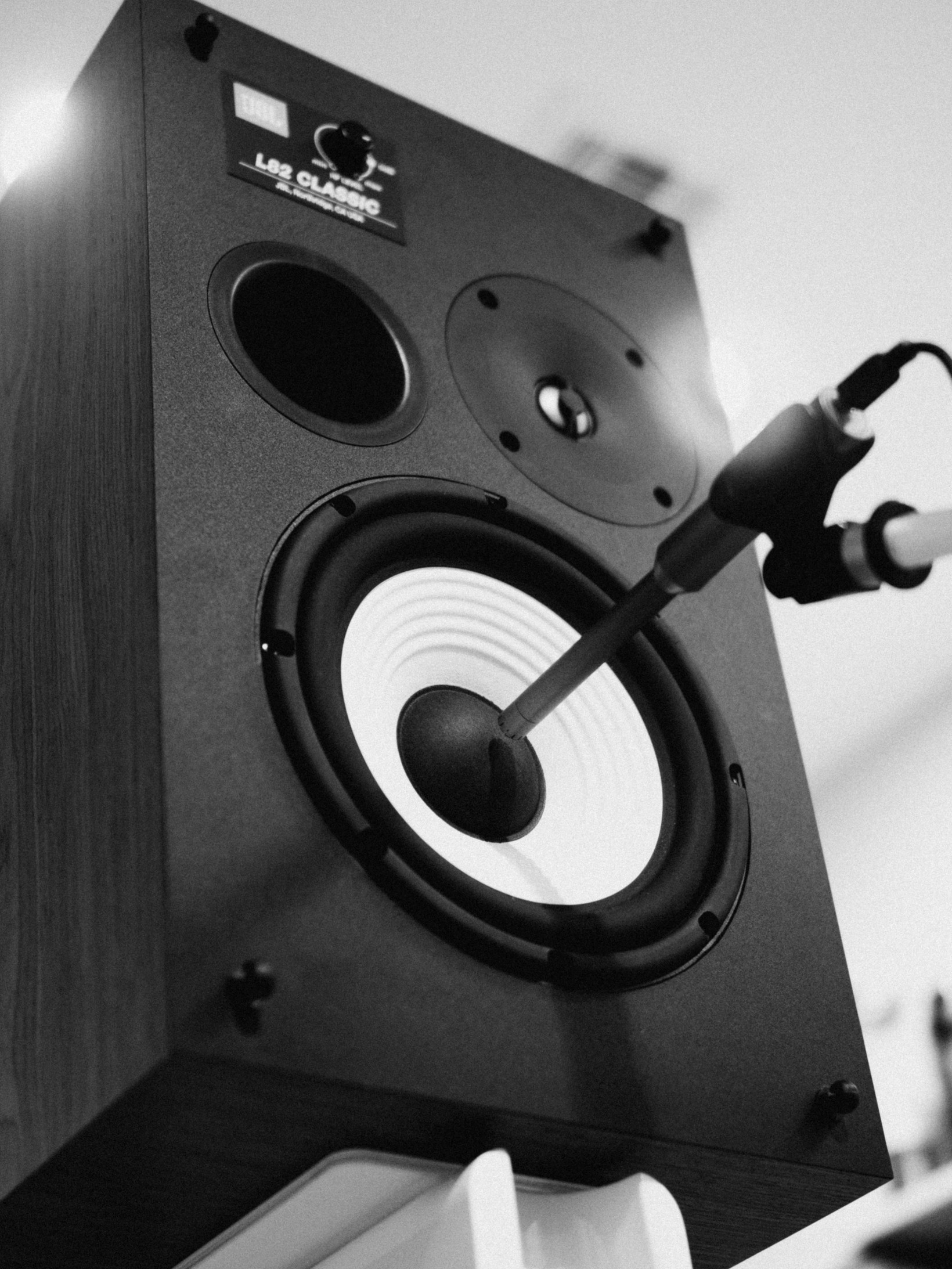
Some background: Using a technique that allows me to reduce the influence of reflections from my measurements, I can approximate the speaker‘s “true” sound as it would be measured in an anechoic chamber. We begin with a graph called a ‘spinorama,’ so-called because it involves rotating the speaker around its horizontal and vertical axes to capture its sound at 70 different angles. Yes, that is as tedious as it sounds.
The spinorama was actually developed by researchers at Harman, JBL’s parent company. It distills those multitudinous data points into one simple graph, giving us a useful summary of both the speaker‘s direct sound and how it radiates sound into a room. This single graph is usually enough to separate the good speakers from the bad ones.
Here’s the spinorama I measured for the L82 Classic with the HF knob at its default setting:

Explanations of how to interpret these lines are provided over at Speaker Data 2034 and Audioholics. Here’s my summary if you think the above lines might as well be rainbow spaghetti:
- The On-Axis and Listening Window curves represent the ‘direct’ sound of the speaker before any reflections, and they should be relatively flat. The On-Axis is measured with the speaker aimed directly at the microphone, while the Listening Window is an average of 9 measurements within a ±30° horizontal ±10° vertical window. This accounts for the fact most people don’t sit perfectly still or centered, so it is generally the more important of the two. As the first and loudest sounds to arrive at our ears, the direct sound has a huge impact on our perception of tonality.
- The rest of the curves focus more on the indirect, or ‘off-axis’ sound — the sound that will reflect off your walls. The Early Reflections is particularly important, as it averages several angles to estimate the very first bounces off your walls, floor, and ceiling to reach your ears. These reflections contribute significantly to our impressions of tonality and soundstage (the latter being particularly affected by horizontal measurements).
- The ER curve should generally tilt down by roughly 8-10dB from 20Hz to 20kHz, though it can vary for speakers with unusual directivity characteristics. The most important thing is that its shape roughly match the direct sound, indicating the reflected sounds are similar in character to the direct sound.
- The Sound Power curve represents an average of the speaker‘s sound in all directions. It’s not as useful as the other curves for speakers that mostly radiate sound forward, but it should generally look like an even steeper version of the ER curve.
- The Predicted In-Room Response curve estimates how a speaker will measure in a real room by combining data from the LW, ER, and SP curves. For the majority of speakers, the PIR curve looks very similar to the Early Reflections curve, so it is often omitted.
- The Directivity Index and Early Reflections DI curves tell us how similar the off-axis sound is to the direct sound. These are calculated by subtracting the Sound Power and Early Reflections curves from the Listening Window, respectively. Smooth DI curves suggest the off-axis and direct are similar, which bodes well for the soundstage. Good DI curves also imply a speaker will respond well to equalization.
- Bumps that persist in both the direct and off-axis sounds suggest an audible resonance. Resonances are bad as they color all music and remind you you’re listening to boxes rather than live music.
- You generally don’t have to worry about what happens above 10kHz, as most people can’t hear much up there and music tends to have little content in this region anyway.
Got all that?
Long-story short: The L82 performs admirably, especially considering it is a passive design without built-in digital EQ to help it out. The only significant flaw present in this image is the messiness in the direct sound around 1-2kHz, but it is not one I found to be really be audible.
Before we dive in, it’s worth acknowledging that JBL was willing to send me the official spinorama for the L82 Classic captured in its anechoic chamber. Lo and behold:

That is very similar to what I was able to achieve with my jerry-rigged at-home setup. How close? Here’s what happens when I scale JBL’s spinorama curves to match my own:

This is about as close as you could expect two sets of measurements with different methodology, equipment, and speakers samples to be. At the very least, it confirms my sample performs as intended, and I find it extremely refreshing as a reviewer to see a company is willing to send me its data. It shows JBL has nothing to hide.
Consistency established, we see the speaker has a direct sound that mostly reflects what I heard: relatively flat with a bass boost around 100Hz and a gently rising treble that can be tuned to taste with the HF knob. Here you can see the effect of the HF knob at different settings: default (white), max (blue), 12-o’clock (green), and minimum (red).
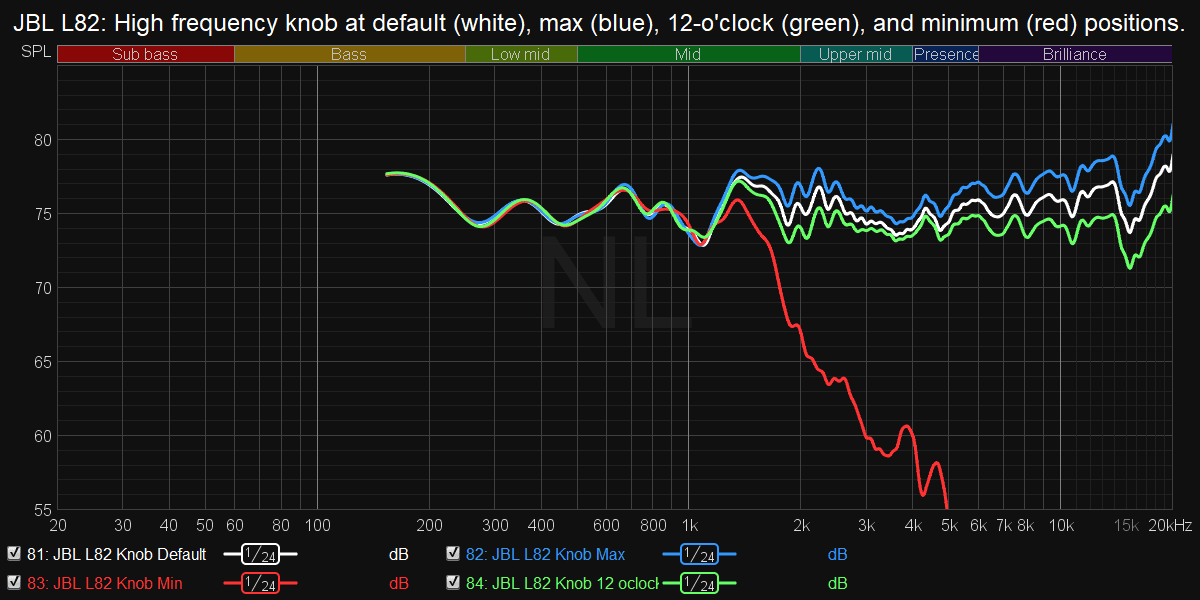
The one quirk in the direct sound is a sharp dip and bump from roughly 1-2kHz. I actively tried to detect this in listening tests after I’d seen the measurements, but could not confidently do so. That’s perhaps because the artifacts are largely balanced out off-axis, as seen by how the ER and other off-axis curves are smoother in this region (in JBL’s more than mine, but this may be partly explained by different methodology).
It’s also worth noting a flaw that isn’t here: most two-way speakers show a large dip in the off-axis curves around their crossover point, something I often find leads to a recessed sound in the vocals. The L82 avoids so with its relatively low 1.7 kHz crossover and a compact waveguide around the tweeter, yielding extremely smooth early reflections and PIR curves (a tad smoother in JBL’s data than mine, but hey, they have an anechoic chamber and I don’t).
In the off-axis curves, we see a peak above 10kHz, but as most music does not have much content in this region and many people do not have great hearing above 10kHz, it’s unlikely to be a problem. Moreover these extra high frequency sounds are rapidly absorbed off-axis, and this resonance is blocked on-axis by a phasing plug placed over the tweeter. It’s unlikely to be an audible issue unless you are listening over 30 degrees off axis from the speaker, which you shouldn’t be doing anyway.
We now turn to the off-axis measurements, we can see evidence for its expansive soundstage and excellent imaging performance.
First, I should note the speaker was measured at tweeter height, at the horizontal midpoint of the cabinet.
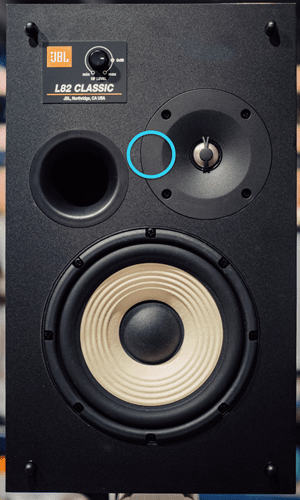
Because of the asymmetrical tweeter placement, we have different measurements for each side of the speaker.
Lets start with the measurements on the ‘far’ side of the tweeter — towards the port in the above picture:
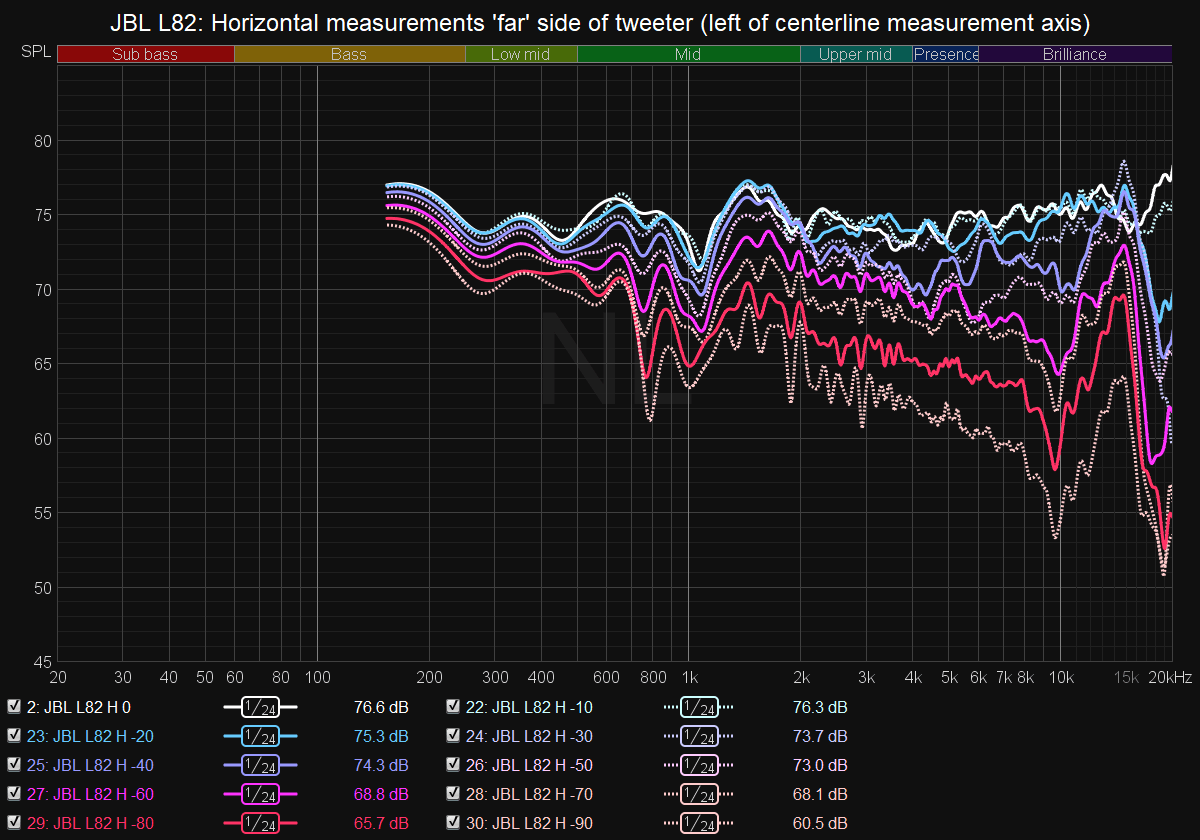
We see here extremely well controlled sound off axis. Even all the way out to 90 degrees, the curves remain smooth, gradually changing with each 10 degree interval. The shape of the off-axis curves match the on-axis cure well, except for above 10kHz where sound will likely be absorbed or unable to be heard anyway.
Next we have the measurements on the ‘close’ side of the tweeter:
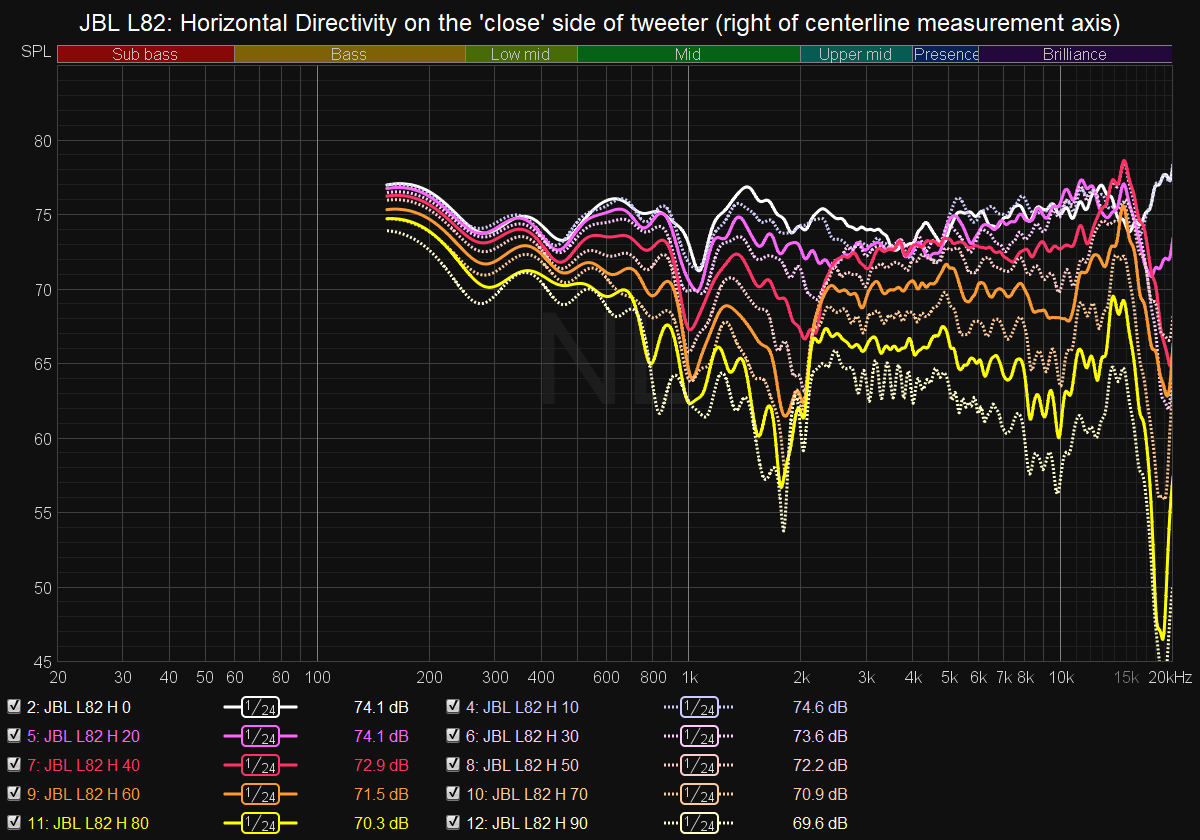
Mostly similar performance. We can see the off-axis sound is actually bit louder on this side, which may be why I found having the tweeters on the outside to yield a larger soundstage even when compensating for tweeter-to-tweeter distance.
With the tweeters on the outside, the sound reflecting off your walls will be louder too, which typically leads to a perception of a larger soundstage. There is a dip happening around 2 kHz that could be problematic, but on balance, it does not appear to be a major audible issue as it balances out in the overall response.
For more of a ‘big picture’ view, it can be useful to make a few averages of these curves. Below we estimate the reflections off walls to the ‘Front,’ ‘Side,’ and ‘Rear’ of the speaker, as well as the Total Horizontal Reflections — an average of these three curves.

You can see the sidewall reflections are very close in character to the direct sound, predicting good soundstage performance. The Horizontal ERDI curve represents how close the total horizontal reflections are to the listening window, and we see the smooth curve we’re looking for.
One more visualization — here’s what we call a contour plot or polar map. It shows how the speaker’s sound changes as you move away from the reference point on the horizontal plane:
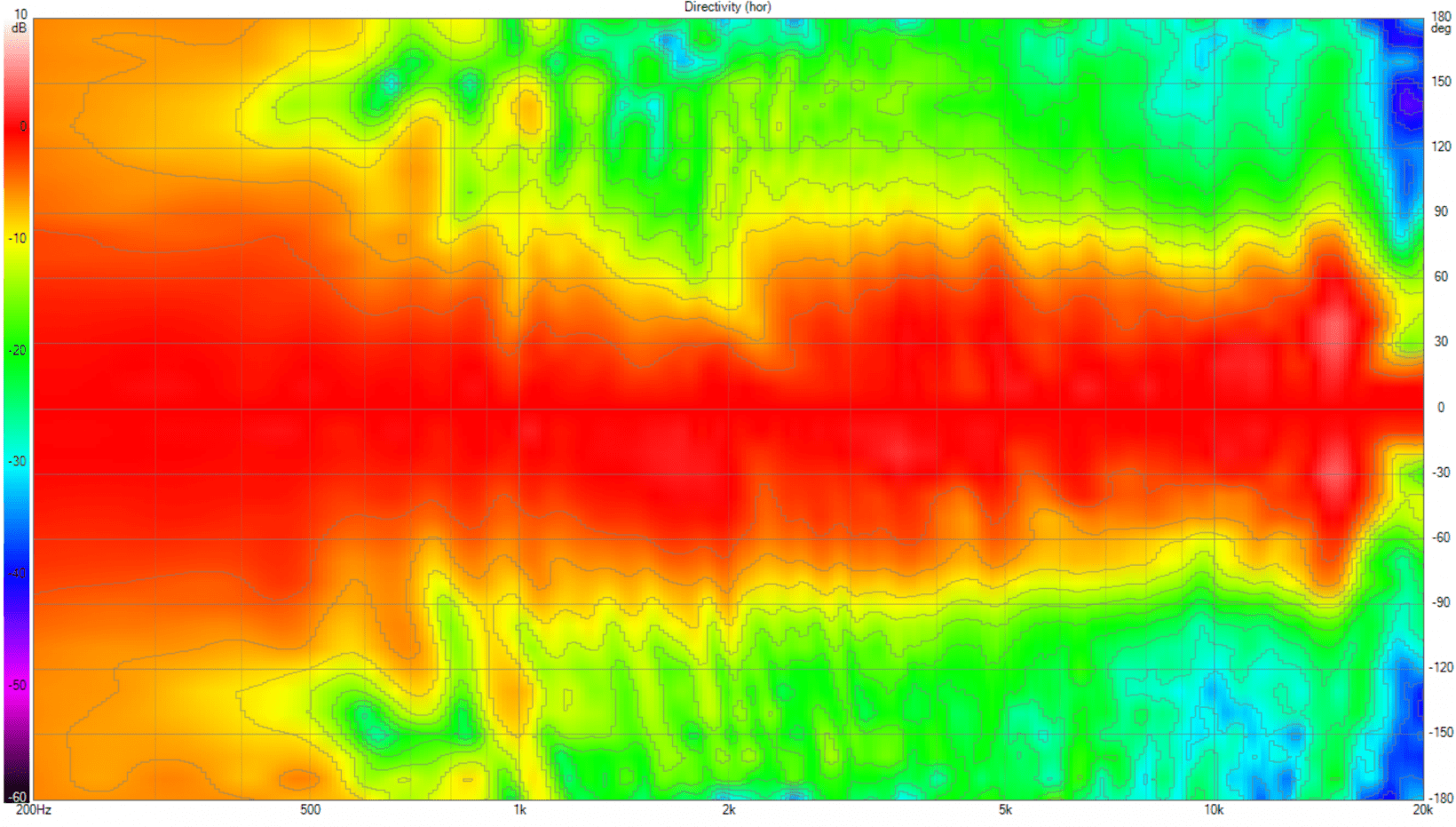
Turning to the vertical performance, the speaker’s ceiling and floor reflections are fairly well controlled and largely balance each other out. Most speakers exhibit larger flaws in this regard:

However I should note that the vertical ‘sweet spot’ is fairly narrow above tweeter height – the sound changes substantially just by 5-10 degrees above my reference point.
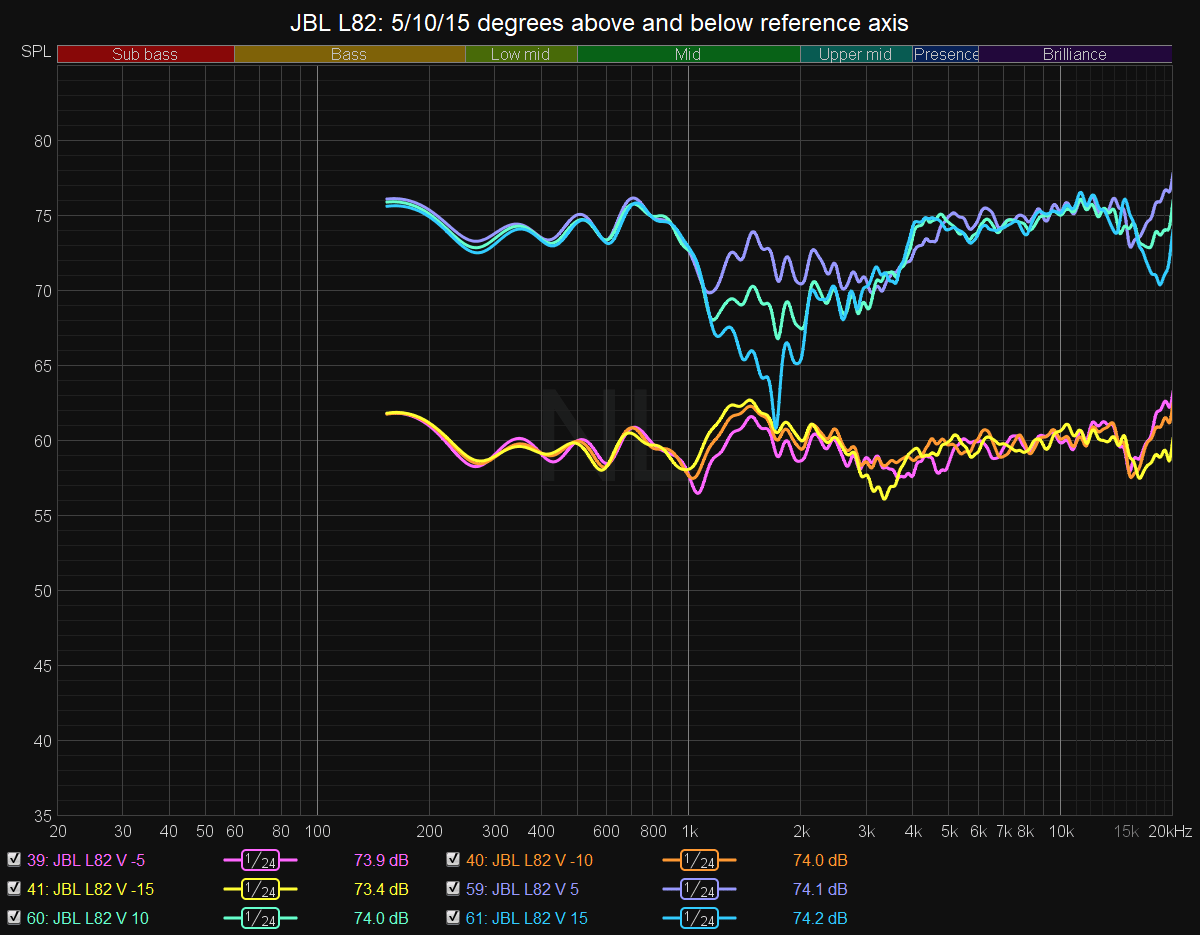
The speaker is much better controlled below tweeter height, barely changing down to 15 degrees below my reference point. This may be the best reason for buying the official stands, which recline the speakers so they point slightly upwards.
Alternatively, you could find another way to angle the speakers, like the Isoacoustics Aperta stands — or maybe you’ll just melt into your couch while you’re enjoying the music. It shouldn’t be much of an issue in a typical setup, especially since the speakers are taller than normal, but it’s worth noting if you listen from very close.
Lastly, here’s that info visualized again in a polar map:
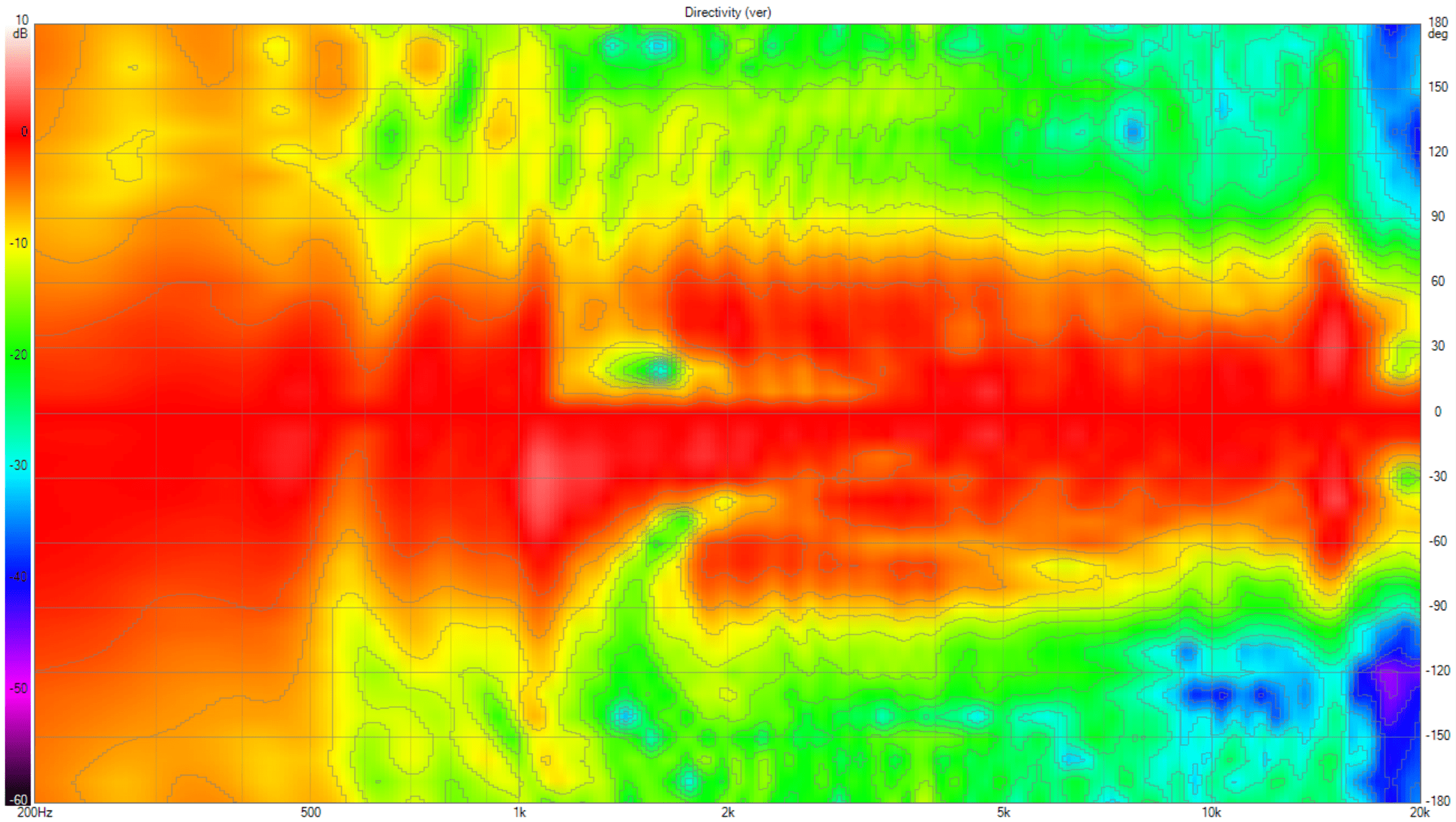
Are these the most pristine measurements I’ve ever seen? No, but they are among the best I’ve seen for a passive design, especially once you consider how the flaws are balanced out off-axis and the flexibility afforded by the treble knob. The ER and PIR curves are particularly smooth, suggesting a great balance in a typical living room setup.
You can get active speakers or studio monitors that have slightly tidier measurements, but how much of an acoustic improvement you’ll see is debatable. In any case, few speakers that measure better manage to do so while maintaining this wide a soundstage — that’s not something I’m personally willing to give up.
Retro looks, modern sound
I’ll summarize my thoughts about this speaker this way: If I had $2,500 to spend on speakers right now, I’d be buying the JBL L82.

Though I wish the speaker came in lighter colors, and I’d love to see an active design with DSP to clean up the few flaws in the measurements, the L82 is a joy to listen to. It has a mostly-transparent tonality with just enough of a bass boost to differentiate itself, and the expansive soundstage is among the best I’ve heard. That the sound is slightly tweakable is just icing on the cake.
While great speakers will wow me when I’m paying attention, the L82 is one of the even rarer speakers that forces me to pay attention — it just sounds that good. I hated having to send these back, and hope I get the chance to hear them again soon.
For more gear, gadget, and hardware news and reviews, follow Plugged on
Twitter and
Flipboard.
Published October 20, 2020 — 20:28 UTC
For forums sites go to Forum.BuradaBiliyorum.Com
If you want to read more like this article, you can visit our Technology category.




